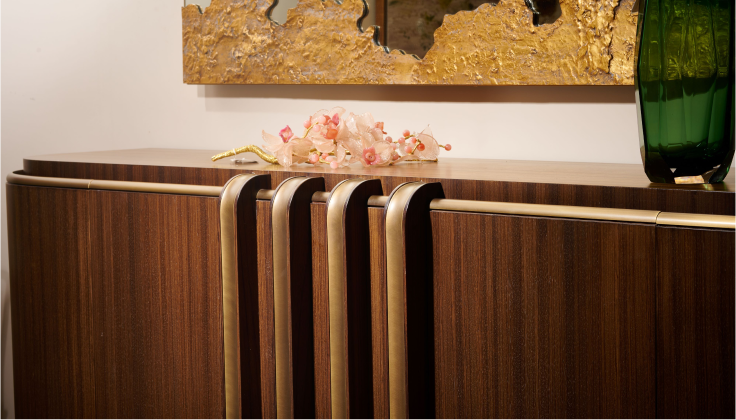The Unwavering Wood Promise.

Ever wondered where your wood came from or how different ethical approaches can sustain the planet? Get to know engineered wood veneers and their counterparts.
Engineered wood veneers are less prone to warping, twisting, and cracking when compared to solid wood veneers. Featuring alternate grain directions per layer and cross grain construction techniques, engineered veneers are better equipped to resist natural expansion and contraction of wood due to humidity and temperature changes. A prized and promising resource, engineered wood veneers offer a compelling combo of stability, consistency, versatility, sustainability, affordability.
Understanding the value of engineered wood veneers.
- Increased versatility: Produced in larger sizes and thicknesses than solid wood veneers, engineered wood veneers allow for more versatility in design and application.
- Increased consistency: Along with a more consistent grain that can offer a more aligned furniture set post production, those veneers tend to offer added longevity in the long run, in part due to their cross grain construction.
- Increased sustainability and affordability: Utilizing smaller, faster growing tree species or wooden scraps that would go to waste, engineered wood veneers are more sustainable than solid wood veneers, and therefore, more affordable than their counterparts.
- Planet friendly: The manufacturing process for engineered wood veneers requires fewer natural resources and generates less waste for a positive impact on the environment.

Of rarity and resources. Sourcing premium wood from across the globe.
Using rare wood veneers helps preserve natural resources by minimizing demand for solid rare woods such as Palisander, Ebony, etc. By choosing veneers over solid woods, consumers and manufacturers can contribute to conservation of rare and endangered tree species while still enjoying the aesthetic beauty of these woods in furniture and architectural projects.
The use and care cheat sheet. Keeping your wood furniture products like new.
- Dust duties: Use a soft, dry cloth or microfiber duster to remove surface dust and debris.
- Polish policies: Choose a wood furniture polish that contains protective ingredients such as beeswax. Its natural oils nourish wood and create a protective barrier against moisture and dirt. Apply a small amount of policy with a soft cloth, following the grain of wood. Then buff gently for a smooth, shiny finish. (You can also purchase an Abode Surface Foam™ bottle at one of our four locations.)
- Sunblock secrets: Place wood furniture away from direct sunlight or sources of heat, as prolonged exposure can cause fading, drying and cracking. Use curtains, blinds or uv blocking window films to protect furniture from harmful uv rays.
- Humidity and use: Maintain a consistent indoor humidity level of around 40-60% to prevent wood furniture from expanding, contracting or warping due to moisture fluctuations. A humidifier or dehumidifier can help keep levels at bay.
- Place and protect: Place coasters, placements, and trivets to protect wood furniture from spills, heat, moisture damage. Use a glass as a table topper to further reduce water rings and general surface damages.
- Rotate and rearrange: Periodically rotate wood furniture to distribute wear and sunlight exposure evenly.
As a general rule, inspect your furniture for damage regularly, fixing scratches, dents, or loose joints early.
Best practices for furniture longevity.
Invest in a furniture protection plan. We always recommend it prior to furniture delivery.
Purchase the Abode Surface Foam™ and use it regularly.
Follow our use and care guide, and ask about specific upholstery maintenance instructions.
Check back for more furniture inspo next time!
Xoxo, Abode Team.
